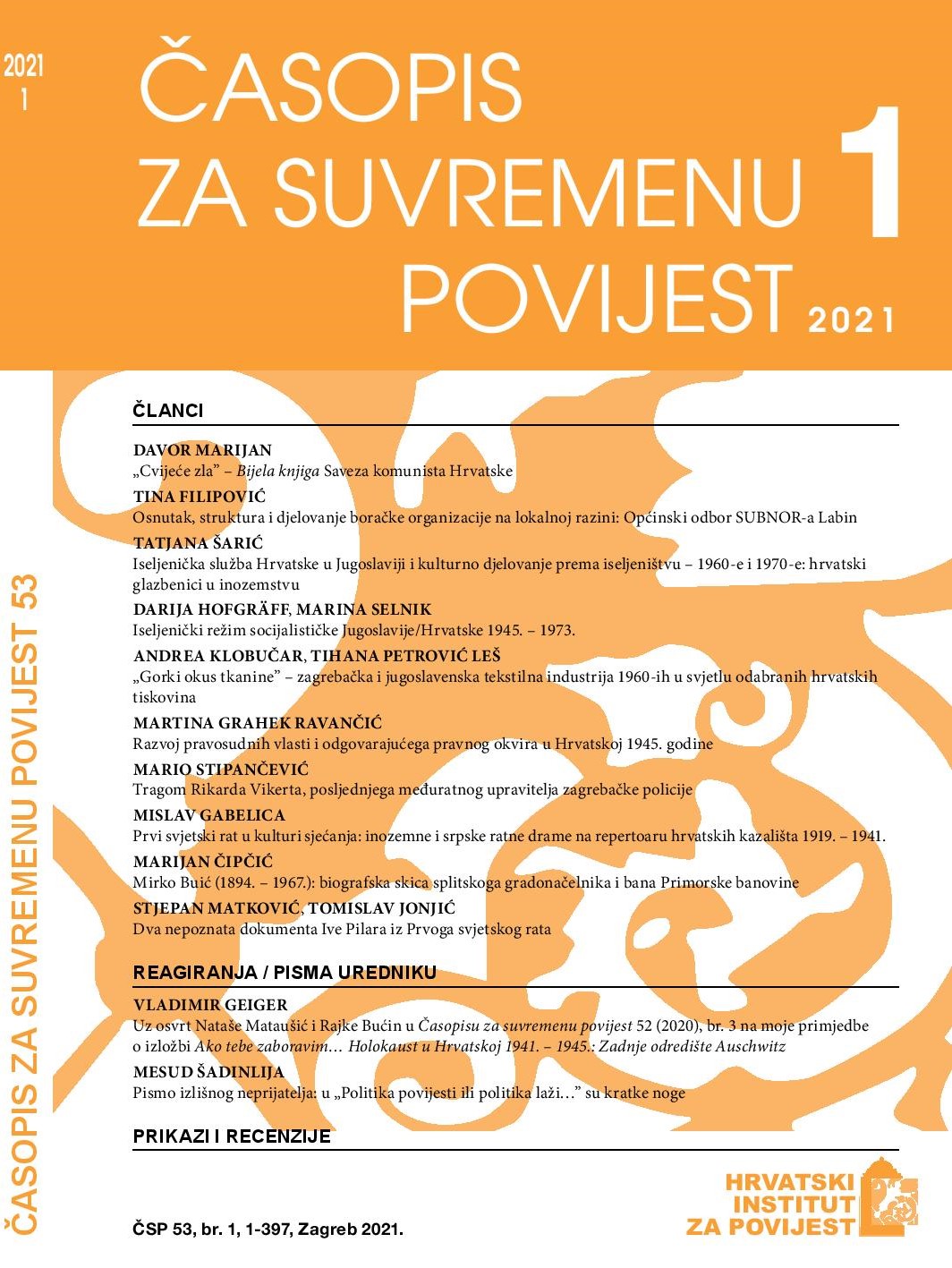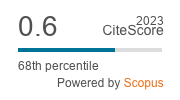‘The Flowers of Evil’: The White Book of the League of Communists of Croatia
DOI:
https://doi.org/10.22586/csp.v53i1.13359Keywords:
Yugoslavia; ideology; anti-communism; White Book; Stipe Šuvar; Croatia; SerbiaAbstract
The White Book is the popular name for the internal analysis of the League of Communists of Croatia from March 1984, in which anti-system occurrences in the public space—i.e. those that were at odds with the policies of the League of Communists of Yugoslavia—from 1982 to 1984 and mostly from Serbia, were gathered. It was the result of the consistent implementation of the policies of the Central Committee of the League of Communists of Yugoslavia in Croatia as well as in most parts of the other Yugoslav republics and autonomous provinces. In Serbia, this was done only partially, obviously due to a desire to avoid a thorough settling of accounts with the media and anti-communists, because they were important to a part of the political leadership that wanted a change of the political system, which was a euphemism for redefining Yugoslav federalism. The goal of the Analysis was to highlight this issue, while the Consultations of Cultural Creators held on 23 May 1984 were intended to offer help from Zagreb. It appears that the White Book purposefully ended up in the hands of persons in Belgrade for whose eyes it had not been intended, and thus worsened relations between the Leagues of Communists of Croatia and Serbia. The White Book was also the cause of long-lasting media polemics, despite the Party leadership’s demands that they be stopped. It is a concrete example that there existed serious differences in the approach to the topic of ideological struggle within the League of Communists of Yugoslavia, and that the conclusions of the League’s Central Committee were not being conducted according to the principles of ‘democratic centralism’.
Downloads
Published
How to Cite
Issue
Section
License
Copyright (c) 2021 authors and journal

This work is licensed under a Creative Commons Attribution-NonCommercial 4.0 International License.
Copyright holders are the publisher Croatian Institute of History and the authors. Journal of Contemporary History is an Open Access journal. Users are allowed to read, download, copy, redistribute, print, search and link to material, and alter, transform, or build upon the material, or use them for any other lawful purpose as long as they attribute the source in an appropriate manner according to the Creative Commons licence CC BY-NC. The papers published in Journal of Contemporary History can be deposited and self-archived in the institutional and thematic repositories providing the link to the journal's web pages and HRČAK. Journal does not charge article processing charges (APC). The editors assume no responsibility for statements of fact or opinion made by contributors.




